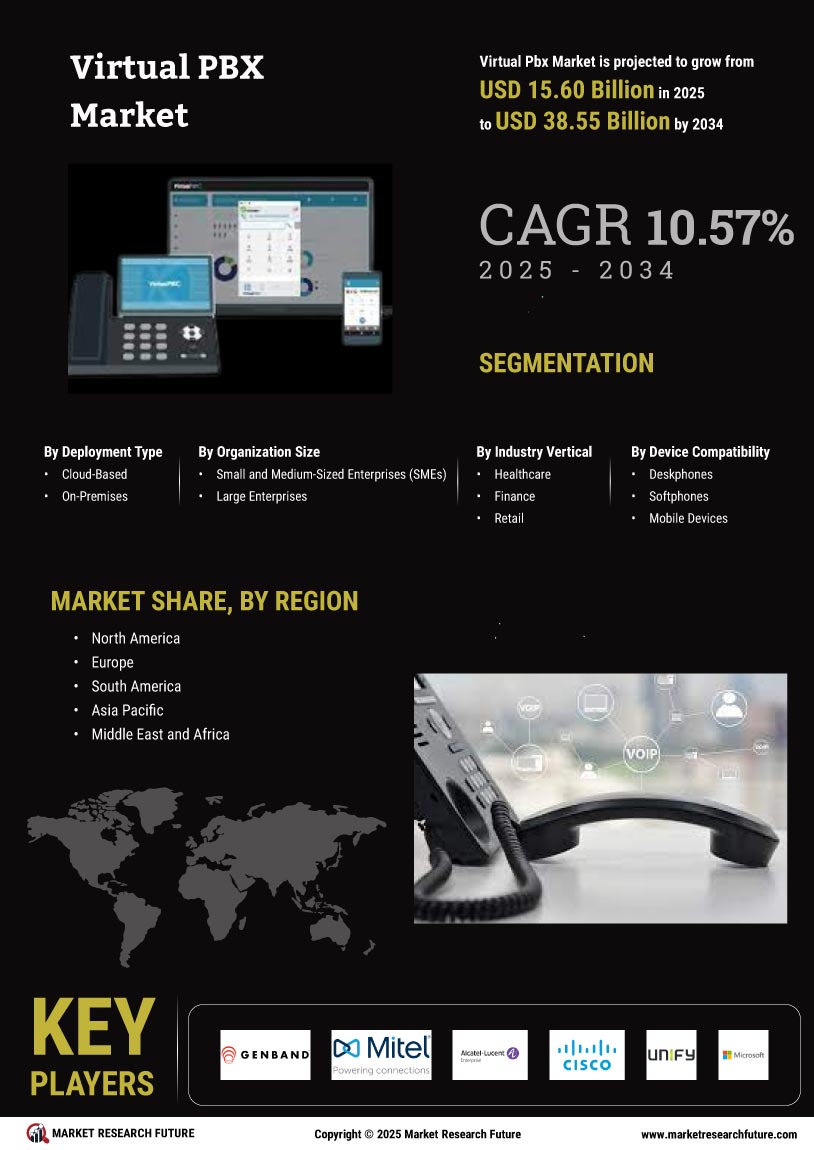Increased Focus on Customer Experience
In the competitive landscape of business, enhancing customer experience has become a priority for many organizations. The Virtual PBX Market is responding to this need by offering solutions that improve customer interactions. Features such as call analytics, customer relationship management integration, and personalized greetings are becoming standard offerings in Virtual PBX Market systems. These capabilities allow businesses to better understand customer needs and tailor their services accordingly. As companies strive to differentiate themselves through superior customer service, the demand for advanced Virtual PBX Market solutions is likely to rise, driving growth in the market.
Advancements in Technology and Features
Technological advancements play a pivotal role in shaping the Virtual PBX Market. The integration of advanced features such as call forwarding, voicemail-to-email, and automated attendants enhances the functionality of Virtual PBX Market systems. These innovations not only improve user experience but also increase operational efficiency for businesses. The market has seen a notable increase in the adoption of features like video conferencing and mobile integration, which cater to the evolving needs of modern enterprises. As technology continues to evolve, the Virtual PBX Market is expected to witness further enhancements, making these systems more appealing to a broader range of businesses.
Regulatory Compliance and Security Concerns
As businesses increasingly rely on digital communication, regulatory compliance and security have emerged as critical factors in the Virtual PBX Market. Organizations are required to adhere to various regulations regarding data protection and privacy, which has led to a heightened focus on secure communication solutions. Virtual PBX Market providers are responding by implementing robust security measures, such as encryption and secure access protocols, to ensure compliance with industry standards. This emphasis on security not only protects sensitive information but also builds trust with customers. As regulatory frameworks evolve, the Virtual PBX Market is likely to see continued investment in security features, further driving market growth.
Growing Trend of Remote Work and Flexibility
The rise of remote work has significantly influenced the Virtual PBX Market. As organizations adapt to flexible work arrangements, the demand for communication solutions that support remote teams has intensified. Virtual PBX Market systems provide the necessary infrastructure for seamless communication, enabling employees to connect from various locations without compromising on quality. This trend is reflected in market data, which indicates that companies utilizing Virtual PBX Market solutions report higher employee satisfaction and productivity. The ability to work from anywhere is becoming a standard expectation, and the Virtual PBX Market is poised to benefit from this shift as more businesses seek to implement remote-friendly communication tools.
Increased Demand for Cost-Effective Communication Solutions
The Virtual PBX Market is experiencing a surge in demand for cost-effective communication solutions. Businesses are increasingly seeking ways to reduce operational costs while maintaining effective communication. Virtual PBX Market systems offer a flexible and scalable alternative to traditional phone systems, allowing companies to save on hardware and maintenance expenses. According to recent data, organizations can save up to 50% on telecommunication costs by adopting Virtual PBX Market solutions. This trend is particularly pronounced among small and medium-sized enterprises, which are often more sensitive to cost fluctuations. As the need for budget-friendly solutions continues to grow, the Virtual PBX Market is likely to expand, attracting new players and innovations.


















Leave a Comment